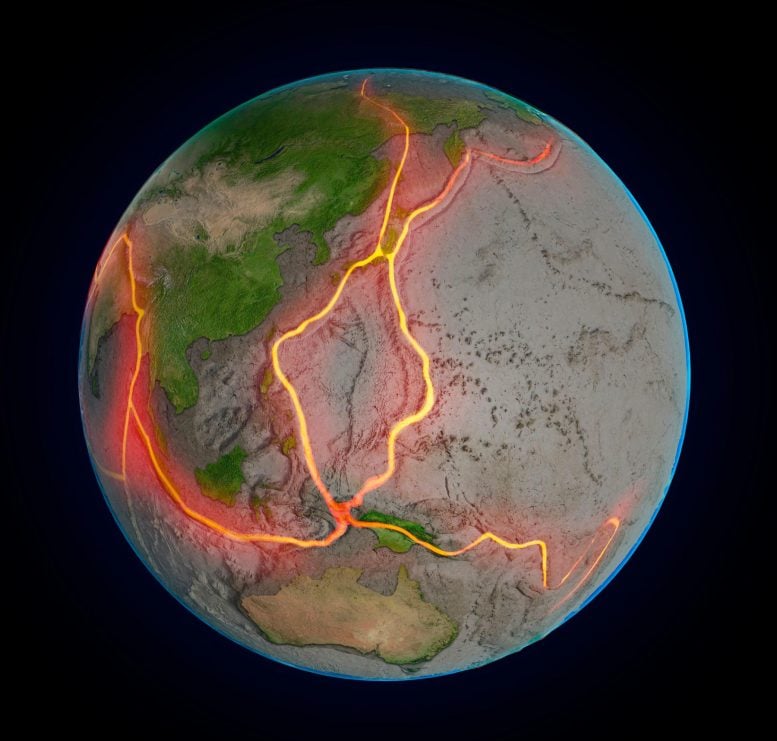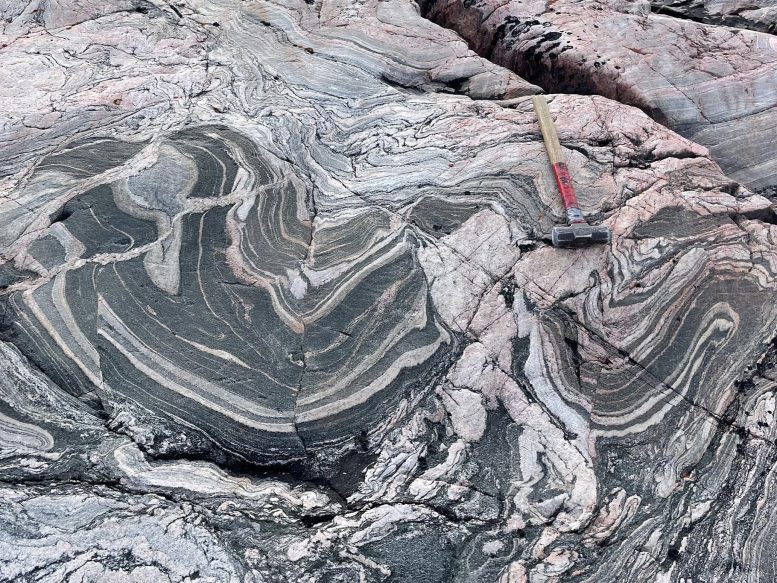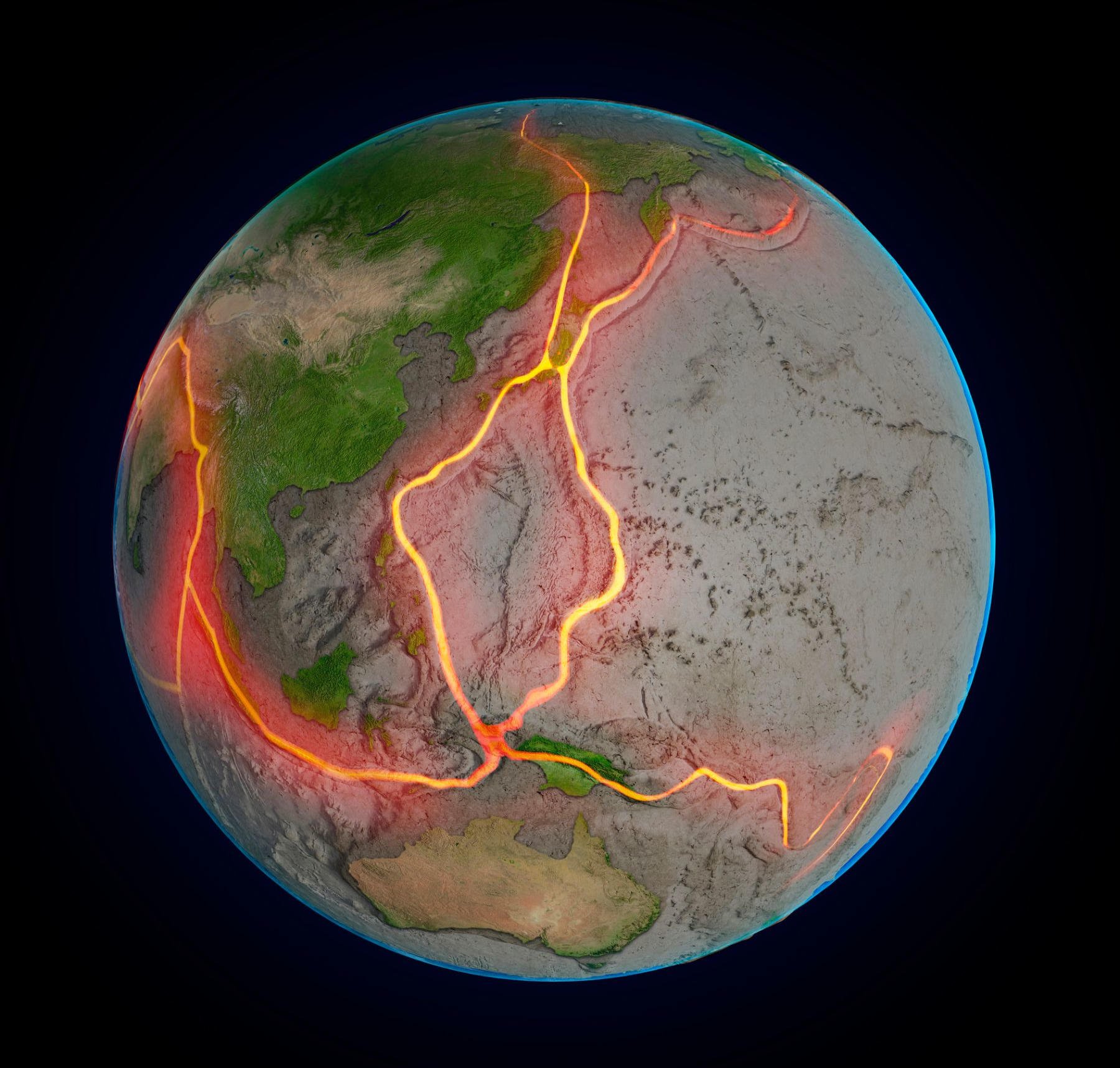
A new study by researchers at Penn State suggests that cratons, the ancient structures that stabilize Earth’s continents, formed about 3 billion years ago through processes initiated by atmospheric weathering of rocks, not just the emergence of stable land masses. This challenges traditional views and has implications for understanding planetary evolution and the conditions conducive to life.
Ancient, vast stretches of continental crust known as cratons have stabilized Earth’s continents for billions of years through shifts in land masses, mountain building, and ocean development. Penn State scientists have proposed a new mechanism that could explain the formation of cratons about 3 billion years ago, shedding light on a long-standing question in Earth’s geological history.
Scientists mentioned in the magazine nature The continents may not have emerged from the Earth’s oceans as a stable landmass, their distinguishing feature being a granite-rich upper crust. Instead, the exposure of new rocks to wind and rain about 3 billion years ago set off a series of geological processes that eventually stabilized the crust — enabling the crust to survive for billions of years without being destroyed or reset.
Scientists said the findings may represent a new understanding of how potentially habitable Earth-like planets evolve.
Implications for planetary evolution
“To make a planet like Earth, you need to make continental crust, and you need to stabilize that crust,” said Jesse Remink, an assistant professor of Earth sciences at Penn State and an author of the study. “Scientists have thought that these are the same thing – the continents became stable and then emerged above sea level. But what we are saying is that those processes are separate.
The scientists said cratons extend more than 150 kilometers, or 93 miles, from the Earth’s surface to the upper mantle, where they act like the keel of a boat, keeping the continents floating at or near sea level through geologic time.
Weathering may eventually concentrate heat-producing elements such as uranium, thorium and potassium in the shallow crust, allowing the deeper crust to cool and solidify. This mechanism created a thick, solid layer of rock that may have protected the continents’ bottoms from later deformation, a distinctive feature of cratons, the scientists said.
Geological processes and heat production
“The recipe for making and stabilizing continental crust involves concentrating these heat-producing elements — which can be thought of as mini-heat engines — near the surface,” said Andrew Smee, an assistant professor of geosciences at Penn State and an author of the study. Stady. “You have to do it every time corn Uranium, thorium, or potassium decays, releasing heat that can increase the temperature of the Earth’s crust. Hot veneer is unstable, it is prone to deformation and will not stay in place.
When wind, rain, and chemical reactions broke down rocks on the early continents, sediments and clay minerals drifted into streams and rivers and were carried to the sea where they created shale-like sedimentary deposits that contained high concentrations of uranium, thorium, and potassium. Scientists said.

These ancient metamorphic rocks called gneiss, found on the Arctic coast, represent the roots of the continents now exposed on the surface. The scientists said sedimentary rocks interbedded in these types of rocks would provide a heat engine to stabilize the continents. Credit: Jesse Remink
Collisions between tectonic plates buried these sedimentary rocks deep in the Earth’s crust where radiative heat from the shale melted the lower crust. The molten material would float and rise back to the upper crust, trapping the heat-producing elements there in rocks like granite, and allowing the lower crust to cool and solidify.
The cratons are thought to have formed between 3 and 2.5 billion years ago, a time when radioactive elements such as uranium were decaying at a rate about twice as fast, giving off twice as much heat as they do today.
Remink said the work highlights that the time when cratons formed in early Middle Earth was uniquely suited to the processes that may have led to their stability.
“We can think of this as a matter of planetary evolution,” Remink said. “The emergence of continents relatively early in their lifespan may be one of the key ingredients you need to create a planet like Earth. Because you will create very hot radioactive deposits and produce a really stable region of continental crust that lives near sea level, which is a great environment for life to spread.”
The researchers analyzed uranium, thorium and potassium concentrations from hundreds of rock samples from the Archean era, when the cratons formed, to assess radiative heat productivity based on actual rock compositions. They used these values to create thermal models of craton formation.
“Previously, people looked and looked at the effects of changing radiant heat production over time,” Smay said. “But our study links rock-based heat production to continental emergence, sediment generation, and differentiation of continental crust.”
Cratons, typically found in the interior of continents, contain some of the oldest rocks on Earth, but they remain difficult to study. In tectonically active areas, the formation of a mountain belt may bring rocks that were buried deep in the Earth to the surface.
But the origins of the cratons remain deep underground and inaccessible. The scientists said future work will include sampling the ancient interior of cratons, and perhaps drilling core samples to test their model.
“These metamorphic sedimentary rocks that melted and produced granite that concentrated uranium and thorium are like black box flight recorders that record pressure and temperature,” Smay said. “If we can open this archive, we can test our model’s predictions of the journey path of continental crust.”
Reference: “Subaerial Weathering Stabilized Continents” by Jesse R. Remink, and Andrew J. Sami, May 8, 2024, nature.
doi: 10.1038/s41586-024-07307-1
Penn State and the US National Science Foundation provided funding for this work.

“Typical beer advocate. Future teen idol. Unapologetic tv practitioner. Music trailblazer.”







More Stories
Boeing May Not Be Able to Operate Starliner Before Space Station Is Destroyed
How did black holes get so big and so fast? The answer lies in the darkness
UNC student to become youngest woman to cross space on Blue Origin